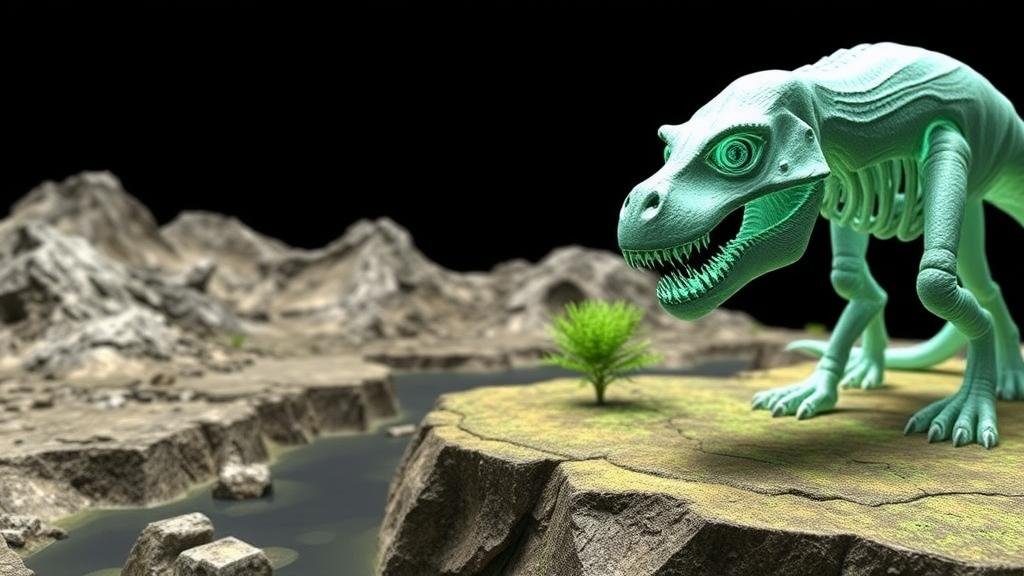Using AI to Simulate Ancient Ecosystems for Fossil and Artifact Predictions
Using AI to Simulate Ancient Ecosystems for Fossil and Artifact Predictions
The study of ancient ecosystems and their relationship to fossil and artifact deposition has long captivated paleontologists and archaeologists alike. Recent advancements in artificial intelligence (AI) have introduced new methodologies for simulating these ecosystems, offering innovative approaches for predicting the location and context of undiscovered fossils and artifacts. This article explores the application of AI in reconstructing historical environments, analyzing data, and enhancing the predictive capabilities of researchers in the fields of paleontology and archaeology.
The Role of AI in Ecosystem Simulation
AI can process vast amounts of data efficiently, allowing researchers to reconstruct ancient ecosystems using various data inputs, including geological surveys, fossil records, and climatic conditions. A notable example is the work conducted by the University of California, Berkeley, which developed machine learning models to simulate the environments of the Late Cretaceous period (approximately 100 to 66 million years ago).
- Data collection involved paleoclimatic data and fossil distribution maps.
- AI algorithms processed this information to model potential habitats and interactions among species.
Such simulations can reveal critical insights into species interactions, competition, and the impact of climate change, thus providing a more comprehensive understanding of why certain fossils and artifacts are found in specific locations.
Advantages of AI-Driven Simulations
Utilizing AI for ecosystem simulations offers several advantages over traditional methods:
- Scalability: AI can analyze datasets that are infeasible for human researchers to evaluate manually, enabling broader analysis of ancient environments.
- Accuracy: Machine learning algorithms can identify patterns and correlations within large datasets that might not be immediately apparent.
- Efficiency: AI significantly reduces the time required to model complex scenarios, streamlining the research process.
Real-World Applications and Case Studies
Several projects have successfully integrated AI into fossil and artifact prediction. For example, a collaborative study involving Northwestern University and the Field Museum applied AI to model the ancient ecosystems of the Great Plains during the Pleistocene epoch (approximately 2.6 million to 11,700 years ago). They utilized machine learning algorithms on data from existing fossil records and ecological parameters to forecast potential locations of undiscovered remains.
This study not only enhanced the predictive capabilities of researchers but also identified likely sites for excavation, leading to the discovery of previously unknown megafauna remains, such as those of the American mastodon (Mammut americanum).
Challenges and Limitations
Despite its advantages, the application of AI in simulating ancient ecosystems is not without challenges:
- Data Quality: AI models rely heavily on the quality and availability of data. Incomplete or biased datasets can lead to inaccurate predictions.
- Model Complexity: The complexity of ecological interactions can be difficult to accurately replicate within algorithmic frameworks.
- Interpretation of Results: Scientific interpretation of AI-generated predictions requires rigorous validation, which can be resource-intensive.
Future Directions in AI Ecosystem Research
Looking ahead, more integration of AI with geographic information systems (GIS) shows great promise. This combination can enhance spatial analysis and enable researchers to visualize ancient landscapes in three dimensions. Enhanced simulations will further drive precision in locating potential dig sites and interpreting artifact placement related to past human behaviors. Also, interdisciplinary collaborations between computer scientists, paleontologists, and archaeologists will be essential for overcoming present challenges and advancing this field.
Conclusion
The intersection of AI and ancient ecosystem simulation represents a new frontier in fossil and artifact prediction. By harnessing the power of machine learning and data analysis, researchers can gain deeper insights into historical biomes and improve excavation strategies. While challenges remain, the potential benefits promise to transform how scientists understand past life on Earth. As AI continues to evolve, so too will its applications in the preservation of history and the unveiling of our planets complex biological heritage.
As a takeaway, researchers in paleontology and archaeology are encouraged to adopt AI tools to enhance their methodologies, focusing on improving data quality and fostering interdisciplinary collaborations for better predictive modeling.



